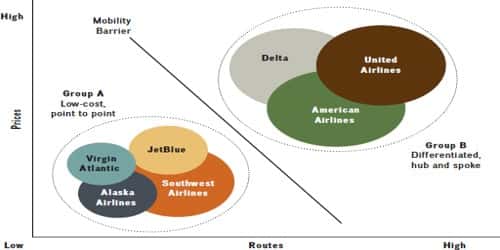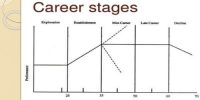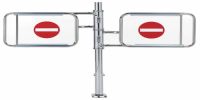Mobility barrier: “Mobility barriers” is, therefore, a general term which includes barriers to entry, barriers to exit, and barriers to intra-industry changes in market position. More specifically, mobility barriers may refer to barriers to movement from one strategic group of firms within an industry to another group. They are factors which obstruct the capability of firms to enter or exit an industry or to move from one segment of an industry to another. “Mobility barriers” is, therefore, a common term which includes barriers to entry, barriers to exit, and barriers to intra-industry changes in market position.
Michael Porter (1980) developed the concept and applied it to his overall system of strategic analysis. He explained strategic groups in terms of what he called “mobility barriers”. These are similar to the entry barriers that exist in industries, except they apply to groups within an industry. Because’ of these mobility barriers a company can get drawn into one strategic group or another. Strategic groups are not to be confused with Porter’s generic strategies which are internal strategies and do not reflect the diversity of strategic styles within an industry.
Two Types:
(1) Low mobility barriers
- means that it is easy to move the company from one to another strategic group,
- the least attractive sector groups can be a threat to other groups.
(2) High mobility barriers
- means the stability of the structure of competition and security within the group,
- strategic groups protected by high barriers to mobility have good conditions for development.















